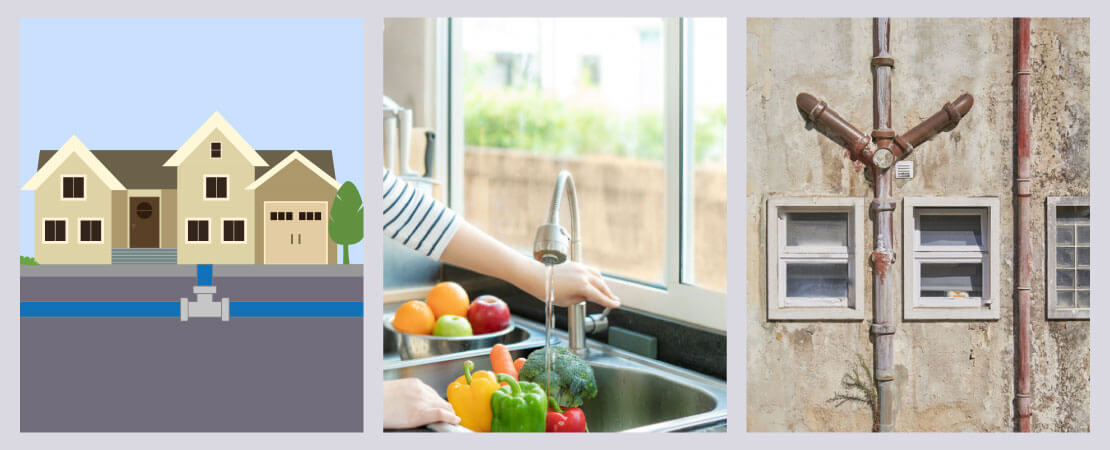Almost everyone will have their own rationale about 6 Common Plumbing Problems and How to Fix Them.

Introduction
Maintaining a useful plumbing system is important for a comfortable home. By taking safety nets, you can avoid typical plumbing issues that may disrupt your day-to-day live and incur costly repair work.
Routine Maintenance Checks
Frequently checking your plumbing system is essential for determining possible concerns prior to they intensify. Check pipelines, faucets, commodes, and devices for leaks, corrosion, or indications of damage.
View What You Flush
Be mindful of what you flush down your toilets. Avoid purging items such as wipes, cotton spheres, sanitary items, and paper towels, as these can cause blockages and back-ups in your pipes.
Proper Disposal of Grease and Food Waste
Dispose of grease, oils, and food scraps effectively to stop build-up in your pipelines. Avoid putting oil down the tubes, as it can solidify and trigger obstructions. Use a strainer in your kitchen sink to catch food fragments and vacant it routinely.
Monitor Water Stress
Watch on your water pressure to stop anxiety on your pipelines and home appliances. High water pressure can bring about leakages and damage with time. Think about installing a stress regulatory authority to preserve optimum water pressure throughout your home.
Secure Pipes from Cold
Throughout cold weather, take steps to stop your pipelines from freezing. Protect subjected pipelines, particularly those in unheated areas like cellars and attic rooms. Permit faucets to drip during freezing temperature levels to stop water from freezing in the pipes.
Address Leaks Immediately
Address any leaks or leaks as soon as you discover them. Even minor leaks can drainage and create damages to your home in time. Tighten up loose fittings or change worn-out seals to avoid leaks from aggravating.
Be Mild with Plumbing Components
Stay clear of utilizing extreme force when operating plumbing components such as taps and valves. Misuse can trigger deterioration, causing leaks and various other breakdowns.
Routine Drainpipe Cleansing
Arrange regular drainpipe cleaning to prevent build-up of hair, soap scum, and various other debris. Make use of a drain snake or chemical cleaner to get rid of obstructions and maintain smooth water drainage.
Install Water Softeners
Take into consideration setting up a water softener if you have hard water. Difficult water can trigger mineral accumulation in your pipelines and devices, bring about reduced water circulation and efficiency.
Enlighten Family Members
Educate every person in your house about proper plumbing methods. Show them what must and should not be purged or thrown away down the drain to avoid avoidable plumbing problems.
Conclusion
Avoiding common plumbing issues in your home calls for persistance and regular upkeep. By adhering to these safety nets, you can make sure that your plumbing system operates smoothly and avoid pricey repair services in the future.
Expert Tips for Preventing Common Plumbing Issues
Keep Drains Clear and Functional
Regularly clean drain covers and hair-catching devices to eliminate debris and prevent buildup. Avoid disposing of grease, oil, or coffee grounds down your drains, as they can congeal and accumulate over time, creating obstructions. Consider using a biodegradable drain cleaner periodically to break down organic matter and maintain clear pipes. Prevent and Identify Leaks Early
Regularly inspect visible plumbing connections, pipes, and fixtures for signs of moisture or corrosion. Fix loose connections or replace damaged components as needed. Install water leak sensors in high-risk areas such as under sinks, near water heaters, and around washing machines to provide early warning of potential leaks. Monitor your water bill for sudden increases in usage, which may indicate a hidden water leak. Protect Plumbing from Freezing Temperatures
Allow faucets to drip slightly during extremely cold weather to prevent freezing and pressure buildup inside the pipes. Seal gaps and openings in walls, doors, and windows near plumbing to prevent drafts from reaching your pipes. Maintain Optimal Water Heater Performance
Schedule annual professional maintenance of your water heater, including checking pressure-relief valves, flushing sediment buildup, and inspecting for corrosion or leaks. Maintain the manufacturer-recommended temperature setting, typically around 120°F (49°C), to optimize energy efficiency and prevent scalding. Consider installing an expansion tank in your system if you have a closed-loop water supply, which prevents excessive pressure buildup and potential water heater failure. https://www.climatecontrolkc.com/blog/plumbing/tips-for-preventing-plumbing-issues/

We hope you enjoyed our section on Common Plumbing Problems and How to Prevent Them. Thanks for taking a few minutes to read our piece of content. Do you know another individual who is sincerely interested in the topic? Why not promote it. Thank you so much for going through it.
Call Today